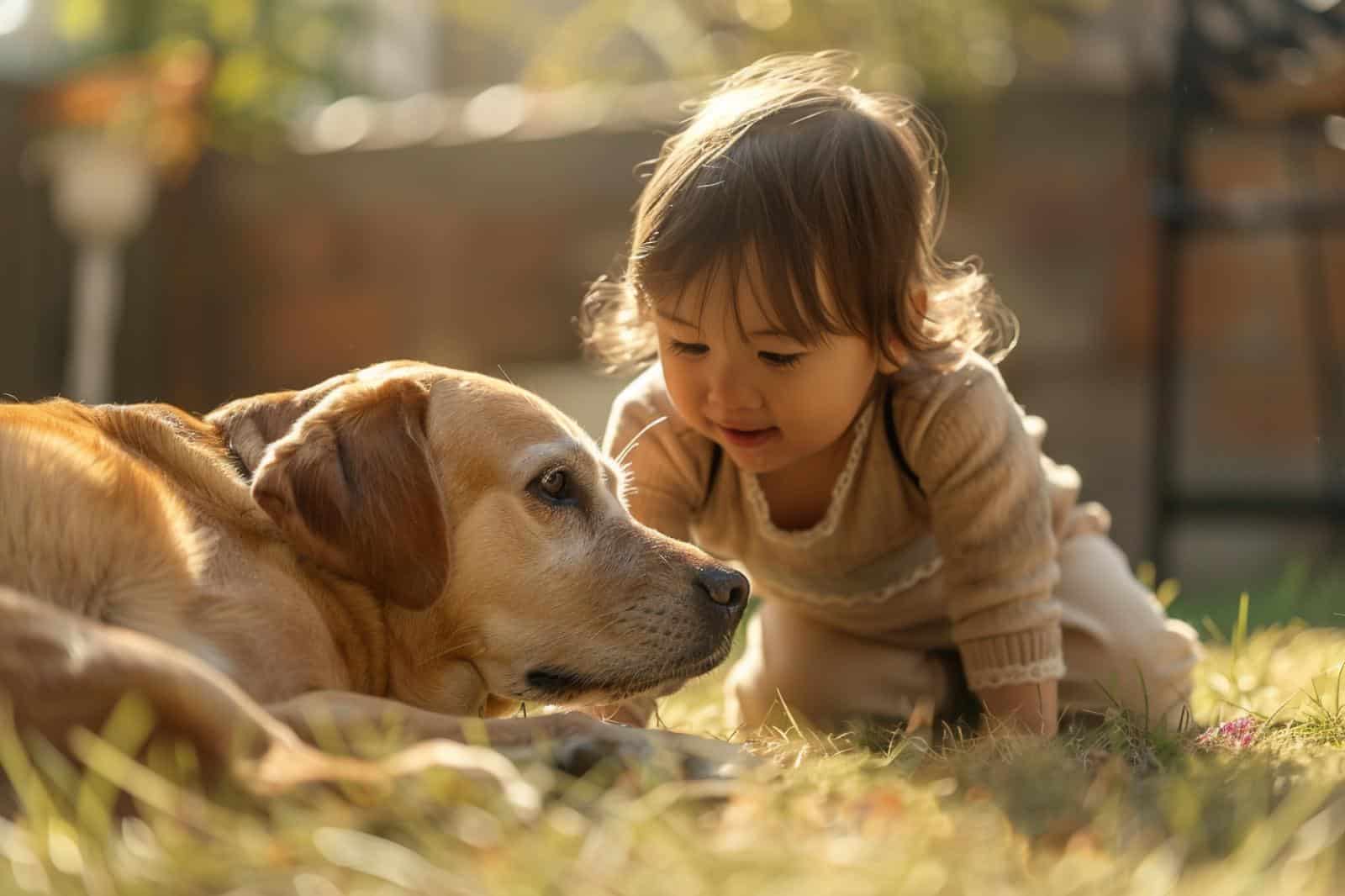What Are the Best Practices for Safe Interaction Between Children and Pets?

The harmonious cohabitation between children and pets can shape a child’s life in extraordinary ways. Pets can teach children about responsibility, empathy, and unconditional love. However, it is essential to establish rules and guidelines for interaction, ensuring that both party’s safety is prioritized. Let’s explore the best practices for safe interaction between children and pets.
Understanding the Pet’s Behavior
Before you introduce your child to a pet, it’s crucial to understand the pet’s behavior. This understanding includes knowing the visible signs of fear, aggression, and stress, as well as knowing how the pet reacts to loud noises, sudden movements, and new people.
A voir aussi : How to Set Up a Quarantine Tank for New or Sick Aquarium Fish?
Dogs may show signs of distress by tucking their tails between their legs, flattening their ears, or yawning repeatedly. Cats might arch their backs, hiss, or swat. Small animals such as hamsters may freeze or attempt to hide. Different animals have different ways of expressing discomfort, so it’s crucial to educate yourself and your children about these behaviors.
This understanding will help guide interactions, ensuring that the child knows when to approach the pet and when to give it space, thus reducing the risk of accidental injuries or stress for the pet.
Sujet a lire : How to Choose the Right Type of Outdoor Shelter for Your Pet in Various Weather Conditions?
Teaching Respect and Empathy
Teaching children to respect pets and their spaces is a vital component of safe interaction. This involves teaching them not to disturb the pet while it’s eating or sleeping, respecting its private space, and not forcing play or affection.
It’s also necessary to teach children empathy in their interactions with pets. They should understand that pets have feelings and should be treated kindly. This includes not pulling on tails, ears, or fur, and not yelling at or around the pet.
Teaching respect and empathy not only contributes to the safety of the pet but also positively impacts the child’s social and emotional development, shaping them into compassionate individuals.
Safe Play and Interaction
The next step in fostering a child-pet bond is establishing safe play and interaction guidelines. Pets, especially puppies and kittens, have sharp teeth and claws that can unintentionally harm a child during play.
It’s important to supervise play sessions, especially with younger children. Guide your child on how to gently play with the pet, discouraging any roughhousing, and showing them the correct way to pick up and handle the pet.
Introduce toys that can be used to interact with the pet, reducing the chance of the pet accidentally hurting the child. For example, a long string toy for cats or a tug rope for dogs would be suitable.
Training the Pet
Training your pet is equally as important as teaching your child. A well-behaved pet is less likely to harm a child, even unintentionally. Basic commands like ‘sit’, ‘stay’, ‘leave it’, and ‘gentle’ can significantly increase safety during child-pet interactions.
Moreover, socializing your pet with children is essential. Allowing them to get used to the noise, speed, and actions of children will lessen their stress and increase their comfort around them.
Remember, consistency is key in training. Be patient, reward good behavior, and soon enough, you’ll see positive results in your pet’s conduct.
Role of Adults in Supervision
While fostering an independent relationship between your child and their pet is important, adult supervision is necessary to ensure safety, especially in the early stages of their interaction.
Adults can correct any inappropriate behavior before it escalitates, and guide the child in understanding the pet’s unspoken communication. Additionally, they can intervene when the pet shows signs of stress, providing a safe environment for both the child and the pet.
In a nutshell, fostering a safe environment for children and pets to interact requires understanding, respect, empathy, training, and supervision. By ensuring these elements, you’ll help build a valuable and enduring friendship between your child and their pet, which will contribute positively to their growth and development.
Building Trust and Confidence
Building trust and confidence between a child and a pet is a crucial task. The process takes time, but patience and consistency can yield fruitful results. Trust is not just built through play and interaction but also through mutual respect and understanding.
While children should be taught to respect pets, pets should also learn to trust children. This process can begin with supervised interactions where the child is taught to approach the pet gently and respectfully. Encourage your child to offer treats to the pet or involve them in feeding, grooming, or exercising the pet.
Pets can sense fear, so it’s important that children feel confident around them. Reading books or watching videos about pets, and spending time observing pets in a safe environment, can help dispel fears. Children should also be taught not to make sudden movements or loud noises that can startle pets.
Remember, a relationship built on trust and confidence is key in ensuring a safe and harmonious interaction between children and pets. Events like a child being bitten or scratched due to misunderstanding or fear can cause a long-term fear of animals, so taking the time to build this relationship can have lifelong benefits.
Encouraging Positive Interactions
Encouraging positive interactions between children and pets is crucial. This can be done by involving children in the care of the pet, guiding them to play appropriately, and appreciating good behavior.
Involving children in pets’ care responsibilities such as feeding, grooming, or walking can foster a sense of responsibility and a feeling of being needed and appreciated by the pet. However, they must be tasks that the child can perform safely, with adult supervision.
Appreciating the child when they interact well with the pet encourages them to repeat such behaviors. Positive reinforcement can be highly effective in teaching children how to interact with pets.
It’s also essential to model positive behavior. Pets often mirror the energy and behavior around them. Maintaining a calm and respectful environment around the pet will encourage the same behavior in the pet.
Conclusion
Creating a safe and harmonious environment for children and pets to interact is not a one-time effort but a continuous process. It requires understanding the pet’s behavior, teaching children respect and empathy, promoting safe play, training the pet, supervising interactions, building trust, and encouraging positive interactions.
By undertaking these practices, you will not only ensure the safety of both the child and the pet but also facilitate a beautiful relationship that can significantly aid the child’s emotional and social development. Remember, the bond between a child and a pet can be one of the most rewarding and enriching experiences in a child’s life.
